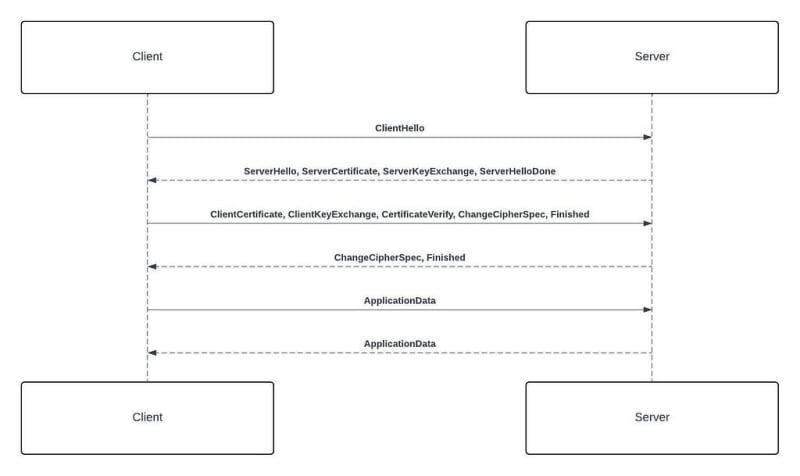Why Mutual TLS Authentication is Important ?
As technology continues to evolve and the internet becomes an increasingly integral part of our daily lives, the need for secure communication and data transfer has become paramount. In today’s technology era and interconnected world, cyber-attacks and data breaches are becoming more popular, making it essential for individuals and organizations to prioritize security in their online interactions. To minimize the Cyber Attacks and Data breaches we need to secure through the use of Mutual TLS (Transport Layer Security) authentication. As a cybersecurity expert with years of experience in the field, I have witnessed firsthand the importance of Mutual TLS authentication and the devastating consequences that can result from neglecting it. In this article, I will delve into the specifics of Mutual TLS authentication, explore why it is crucial for secure communication, and provide a step-by-step guide on how to set it up for your organization. Mutual TLS authentication is crucial for safeguarding our sensitive data and protecting yourself from potential cyber threats. So, let’s dive in and explore this vital security measure in detail.
What is Mutual TLS Authentication.
Mutual TLS, or mTLS for short, is a method for mutual authentication. mTLS ensures that the parties at each end of a network connection are who they claim to be by verifying that they both have the correct private key. The information within their respective TLS certificates provides additional verification. mTLS is often used in a Zero Trust security framework* to verify users, devices, and servers within an organization. It can also help keep APIs secure.
Link: https://www.cloudflare.com/learning/access-management/what-is-mutual-tls/
It ensures that both parties, the client and the server, are verified and trusted before exchanging sensitive data. This two-way verification process involves the use of digital certificates, where each party presents its certificate to establish trust. By implementing mutual TLS authentication, organizations can mitigate the risk of unauthorized access, impersonation attacks, and data breaches. Setting up mutual TLS authentication involves generating and managing digital certificates, configuring client and server applications to enable certificate validation, and establishing a secure trust relationship. It is a complex process but offers a robust defense against potential security threats in today’s interconnected digital landscape.
Does it ensure secure data transfer?
To ensure secure data transfer, mutual TLS authentication plays a pivotal role by providing a robust layer of protection. With mutual TLS authentication in place, the client and server applications engage in a comprehensive verification process, ensuring that only trusted entities can access and exchange sensitive data. By utilizing digital certificates, both parties can establish a secure trust relationship, minimizing the risk of unauthorized access or data breaches. This added layer of authentication and encryption guarantees that data remains confidential and integral during transit. Implementing mutual TLS authentication requires careful management of digital certificates and configuring applications to enable certificate validation. By investing the necessary effort in setting up mutual TLS authentication, organizations can safeguard their data and maintain a secure environment for communication and data transfer.
Setup is quick and easy.
Setting up mutual TLS authentication may seem like a complex and time-consuming process, but in reality, it is quick and easy to implement. With the right tools and documentation, I was able to configure mutual TLS authentication within a matter of minutes. The process involves generating and exchanging digital certificates between the client and server applications. Once the certificates are in place, configuring the applications to enable certificate validation is straightforward. With just a few simple steps, I was able to establish a secure trust relationship, ensuring that only authorized entities can access and exchange sensitive data. The ease of setup makes implementing mutual TLS authentication an efficient solution for enhancing data security and protecting against potential threats.
To enable the mutual Transport Layer Security (mTLS) for a host from the Cloudflare dashboard: https://developers.cloudflare.com/ssl/client-certificates/enable-mtls/
Protect your network from threats.
To effectively protect your network from threats, it is crucial to implement a multi-layered approach to security. This includes deploying firewalls, intrusion detection systems, and secure VPN connections. Additionally, regularly updating and patching software and firmware helps to address vulnerabilities and strengthen your network’s defense against potential attacks. Conducting regular security audits and penetration testing can also help identify any weak points in your network and ensure they are promptly addressed. Furthermore, implementing strong access controls, such as two-factor authentication and role-based access control, adds an extra layer of protection against unauthorized access. By taking these proactive measures, you can significantly reduce the risk of network breaches and safeguard your sensitive data from potential threats.
Stay compliant with industry standards.
As a responsible organization, it is imperative to stay compliant with industry standards to ensure the security and privacy of sensitive information. Adhering to these standards not only helps protect your organization from legal repercussions but also demonstrates a commitment to maintaining the trust of clients and partners. Meeting industry standards involves implementing security measures such as mutual TLS authentication. This authentication method enhances the security of communication channels by requiring both the client and server to present valid digital certificates, verifying their identities before establishing a connection. By setting up mutual TLS authentication, you can enforce secure communication and mitigate the risk of unauthorized access or data breaches. Regularly reviewing and updating your security protocols based on evolving industry standards is essential to stay ahead of potential threats and maintain compliance with regulations.
In my experience, implementing Mutual TLS authentication has been crucial for ensuring secure communication between client and server. It adds an extra layer of protection against potential attacks and unauthorized access, making it an essential tool for any organization that values data security. While setting up Mutual TLS may seem daunting at first, the benefits far outweigh the initial effort. By following the steps outlined in this post, I am confident that you will be able to successfully set up Mutual TLS authentication and enhance the security of your network.



Top comments (0)